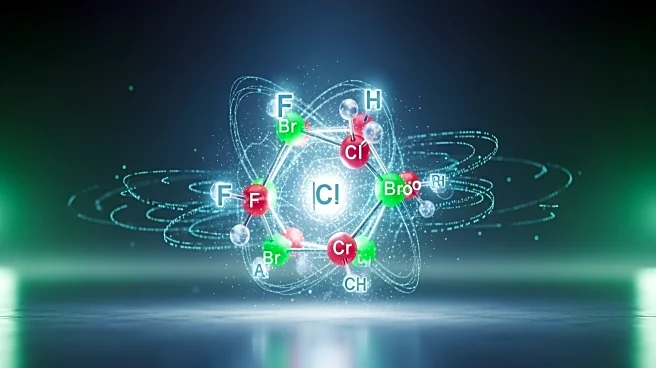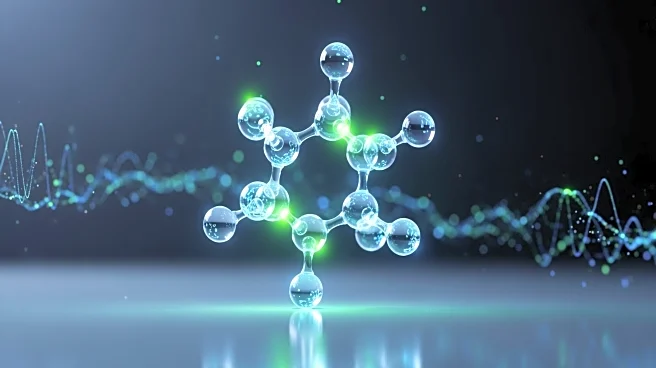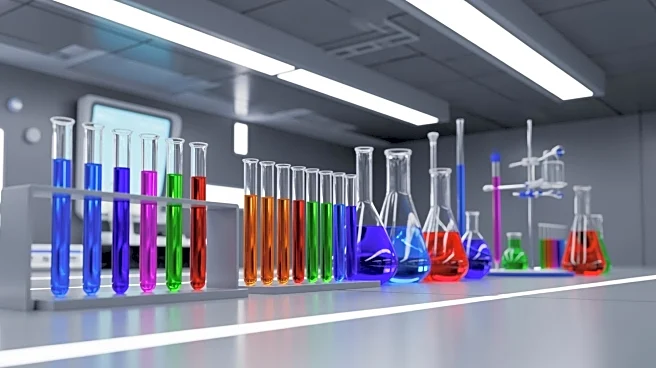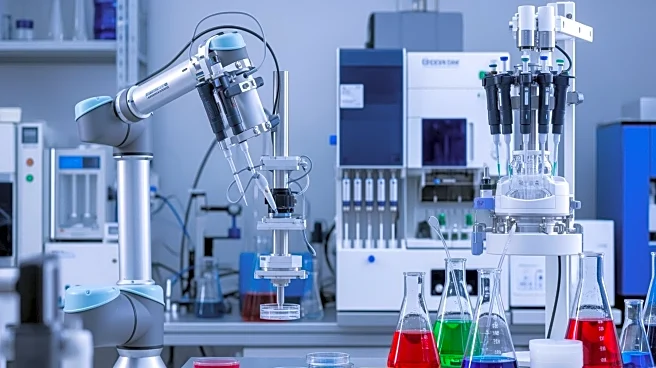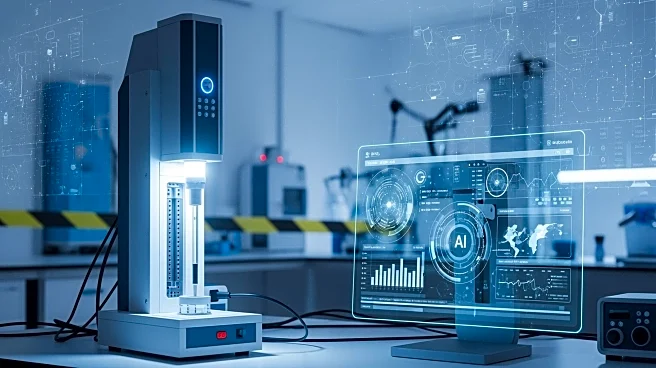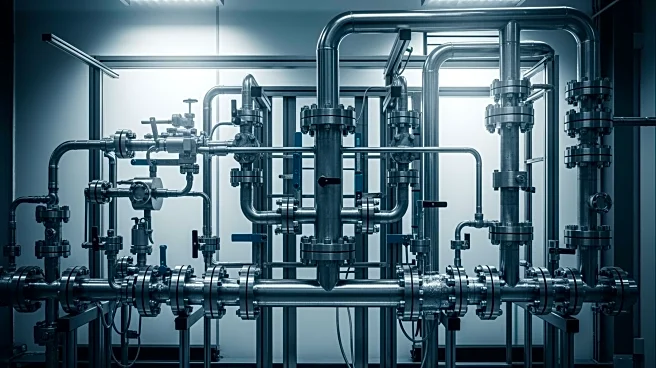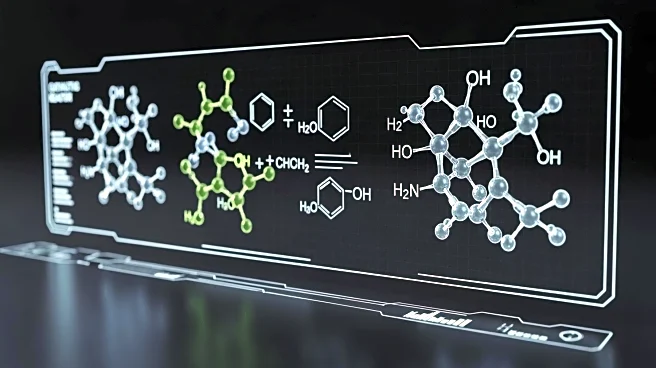What's Happening?
A new dataset, Halo8, has been developed to address the limitations in current quantum chemical datasets by incorporating halogen chemistry. This dataset is designed to improve machine learning interatomic potentials (MLIPs) by providing diverse structural
and energetic data necessary for modeling dynamic chemical processes. The dataset includes approximately 20 million quantum chemical calculations derived from about 19,000 unique reaction pathways, focusing on halogen atoms such as fluorine, chlorine, and bromine. This development builds upon previous datasets like Transition1x and aims to fill the gap in modeling halogen-specific reactive phenomena, which are crucial in fields like pharmaceutical drug design and materials science.
Why It's Important?
The introduction of the Halo8 dataset is significant as it enhances the ability of MLIPs to predict molecular energies and forces with greater accuracy and speed. By focusing on halogen chemistry, the dataset addresses a critical gap in existing datasets, which often lack comprehensive representation of halogen atoms. This advancement is particularly important for industries reliant on chemical processes, such as pharmaceuticals and materials science, where halogenated compounds play a key role. The dataset's ability to model both equilibrium properties and reactive processes involving halogens could lead to more efficient drug design and the development of new materials.
What's Next?
The Halo8 dataset is expected to facilitate further advancements in computational chemistry by enabling the training of more accurate MLIPs. Researchers and industries may leverage this dataset to explore new chemical reactions and develop innovative solutions in drug design and materials science. The dataset's comprehensive approach to halogen chemistry could also inspire the creation of additional datasets focusing on other underrepresented chemical elements, further expanding the capabilities of machine learning in chemistry.
Beyond the Headlines
The development of the Halo8 dataset highlights the growing intersection of machine learning and chemistry, showcasing how computational advancements can drive innovation in scientific research. By addressing the limitations of traditional datasets, Halo8 not only improves the accuracy of chemical modeling but also sets a precedent for future datasets to incorporate diverse chemical elements. This could lead to a more holistic understanding of chemical processes and foster cross-disciplinary collaborations between computational scientists and chemists.
